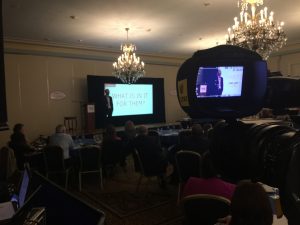 Owen Fitzpatrick – International keynote speaker, best-selling author, globetrotting psychologist and leading expert on influence delivered a fast paced dissection of the world of influence.
Owen Fitzpatrick – International keynote speaker, best-selling author, globetrotting psychologist and leading expert on influence delivered a fast paced dissection of the world of influence.
Commenting on the importance of influence Mr. Fitzpatrick said “Influence is one of the most vital and indispensable skills that all leaders must possess. Nowadays, with globalisation and social media dominating our world, how we communicate with each other has changed massively. Your ability to get others to agree has never been more important.”
In his presentation he outlined the 3 different aspects of Influence.
1. The Attitude of Influence
There are 4 key factors that makes influence possible. Mr Fitzpatrick outlined how how recent developments in neuroscience, behavioural economics and social psychology has given people a far better understanding of persuasion and influence.
Persuasion is about changing peoples beliefs. In order to influence them you need to understand what beliefs they have formed about you in advance. With this knowledge you can construct a way to influence them State or emotion, how you feel or the emotion you express can make a big difference. Focus, Physiology and Ethics are also key factors.
Owen pointed out the importance of Confirmation Bias where people convince themselves of a perspective and only look for cues that support this. Armed with this insight people can be more efficiency influenced.
2. The Psychology of Influence
The speaker proceeded to explain the 3 essential aspects of influence (source, audience and message). People are impacted by who you are and frequently where the message came from is more important than the message. Speaking on the audience Owen discussed the importance of identity and internal perceptions. Finally on the message Owen asked what do you want them to say.
There are 6 principals of influence
- Commitment/consistency. Ask people to do something small before asking for something bigger
- Reciprocation. People want to do something back.
- Liking. If the like you or not
- Authority.
- Social Proof. Doing something because everyone else did.
- Scarcity. Easier to get something the less we value it.
3. The Language of Influence
Finally Mr Fitzpatrick revealed some of the most important phrases that determine how people feel and how to get people to say YES. He also shared how to structure communication to get buy in.
Using demeaning words to describe people can have a very big impact on the perception that people have about someone and action they take.
Use of words and framing also impacts greatly on behaviour and Owen shared example of using lose/save, surcharge/discount death/survival to very different results.
The point in a sentence when you use the word BUT is important because it draws attention to the comments/words after it.
Research has also show that using the word BECAUSE as people are hard wired to assume it has logic.
Owen asked the group to pick the most powerful statement when thinking about the gym.
- Like to
- Want to
- Can
- Should
- Need
- Have to
- Must
- Will
- Am going to
- Am doing
Personal preference of phrase is important as it impacts how much they will do something.
Finally we are all driven by something from:
Success/Challenge/Ownership/Power/Money/Status/Recognition
The key is finding what people are motivated by.
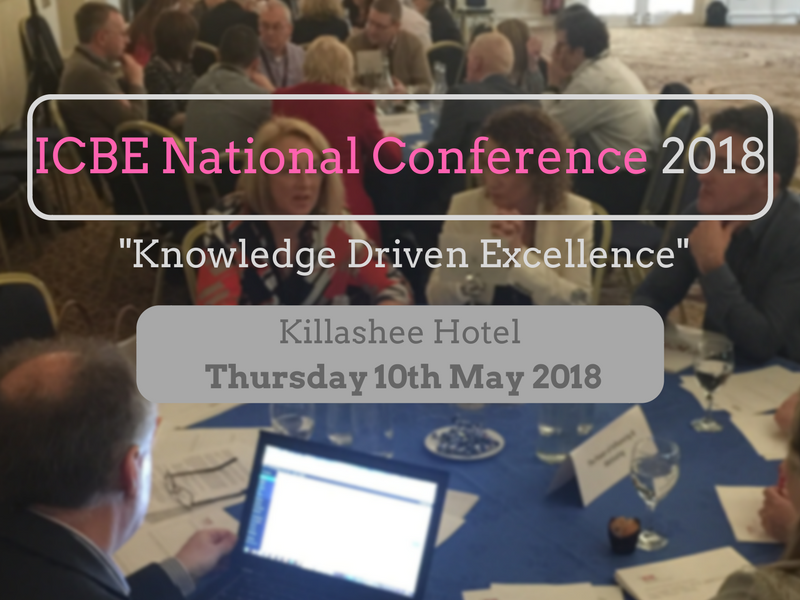
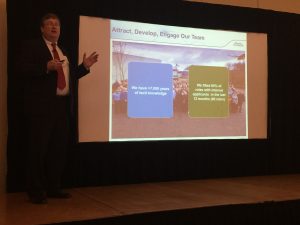 “During our Shingo Journey, Leaders Standard Work was a key enabler in allowing us to demonstrate and nurture the ideal behaviors required of the 4 dimensions of the Shingo Model: Cultural Enablers, Continuous Improvement, Enterprise Alignment and Results” said Sean Gayer – Site Director, Boston Scientific, Cork in his talk entitled ‘Leaders Standard Work’.
“During our Shingo Journey, Leaders Standard Work was a key enabler in allowing us to demonstrate and nurture the ideal behaviors required of the 4 dimensions of the Shingo Model: Cultural Enablers, Continuous Improvement, Enterprise Alignment and Results” said Sean Gayer – Site Director, Boston Scientific, Cork in his talk entitled ‘Leaders Standard Work’.
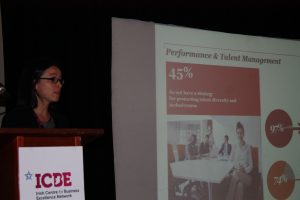 Sharing the results of research amongst HR leaders (PwC’s HRD and CEO Pulse Surveys) Louise Shannon, Senior Manager, People and Organisation, PwC, spoke about “Shaping Ireland’s Future Talent Landscape – Views from HR Leaders and CEO’s”
Sharing the results of research amongst HR leaders (PwC’s HRD and CEO Pulse Surveys) Louise Shannon, Senior Manager, People and Organisation, PwC, spoke about “Shaping Ireland’s Future Talent Landscape – Views from HR Leaders and CEO’s”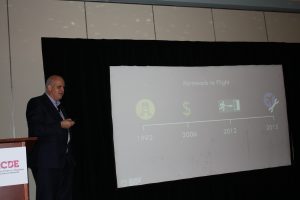
 ity there was risk with a potential €250,000 a week loss if hangars were empty, highly unionised, large reliance on key customers and his own lack of understanding about aviation. However as Patrick points out “You get to the point when you have to make a decision. Rather than focus on the reasons not to invest I focused on the reasons why which were significant including worldwide demand, payment security and pipeline.”
ity there was risk with a potential €250,000 a week loss if hangars were empty, highly unionised, large reliance on key customers and his own lack of understanding about aviation. However as Patrick points out “You get to the point when you have to make a decision. Rather than focus on the reasons not to invest I focused on the reasons why which were significant including worldwide demand, payment security and pipeline.”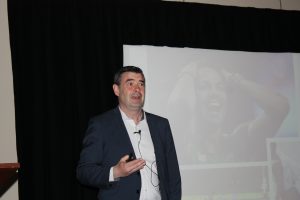 Paul Aherne, Ascend Associate started his presentation on ‘(r)Evolution of Performance Management’ with an overview of Performance Management,
Paul Aherne, Ascend Associate started his presentation on ‘(r)Evolution of Performance Management’ with an overview of Performance Management, Catherine Neilson – Kerry Foods, Director of Strategy.
Catherine Neilson – Kerry Foods, Director of Strategy.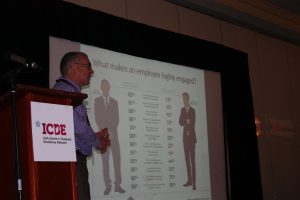 How to deal with the 62% of people who potentially suck the energy out of your business was a central component of Noel Hennessy’s doctorate and presentation.
How to deal with the 62% of people who potentially suck the energy out of your business was a central component of Noel Hennessy’s doctorate and presentation. Following a discussion on ‘Employing Continuous Improvement as a means to engage the disengaged’ the group felt it most impacted on the individual through the following areas:
Following a discussion on ‘Employing Continuous Improvement as a means to engage the disengaged’ the group felt it most impacted on the individual through the following areas: The topic of ‘The(r)Evolution of Performance Management to unleash Organisation & Individual Potential’ generated a lot of animated discussion. People felt there is a lot of dissatisfaction on the “rating” system – This came up again and again. Other comments included:
The topic of ‘The(r)Evolution of Performance Management to unleash Organisation & Individual Potential’ generated a lot of animated discussion. People felt there is a lot of dissatisfaction on the “rating” system – This came up again and again. Other comments included: Following a discussion on ‘The Power of Influencing & Motivating’ the group felt the impact on the individual was:
Following a discussion on ‘The Power of Influencing & Motivating’ the group felt the impact on the individual was: